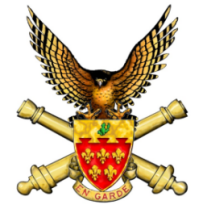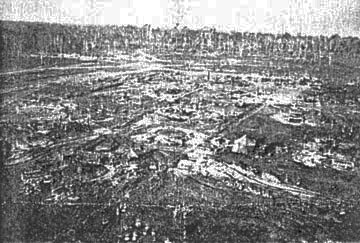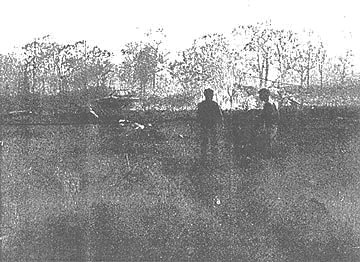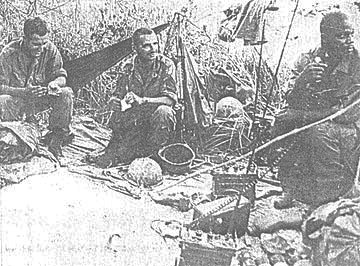





647
Viet Cong Killed in 4-Hour Battle
Reactionary Drill Saves
Artillerymen
I corrected the incorrect number of enemy KIA.--MP
A battlefield dress-rehearsal is credited with preventing the
enemy from completely overrunning the fire support base of the 3rd Bde 4th
Inf. Div., during the massive Viet Cong attack at Soui Tre, March 21.
Lt. Col. John W. Vessey, commander of the 2nd Bn., 77th Arty.,
reported that the night before the attack, the artillery reactionary force
of 50 men had rehearsed in what turned out to be the exact area where they
were needed during the attack.
His comment to the rehearsal was, “It sure paid off.”
Co. B, 3rd Bn., 22nd Inf., was in danger of losing its position.
“They had pulled back into a tight circle and hand-to-hand combat
had flared up in many places,” stated one officer. The 105mm howitzers
were firing at .point blank range and the rounds were landing “about 75 meters
to our front and we couldn’t lower the tubes anymore,” Col. Vessey stated.
It was at this point of the battle that the reactionary force was
committed.
As the battle raged, units of the 3rd Bde., 4th Inf. Div., were
rushing through heavy jungle in an attempt to reinforce the beleaguered
infantry and artillery. The 2nd Bn Mech, 22nd Inf., and the 2nd Bn.,
34th Armor, were pushing in from the west and the 2nd Bn.,12th Inf., was moving
in from the northwest.
“It was the closest thing to the ‘Late-Late Show’ I have ever seen
- it was the cavalry coming to the rescue and we were sure happy to see those
tracks come out of the woodline,” said one officer.
The armored personnel carriers and tanks moved across the clearing
using all available firepower to save the hard-pressed U.S. troopers.
They were able to perform to the maximum of their ability in the clear flat terrain where the battle was being fought.
A tremendous attack through the support base area and directly into the
VC lines drove the enemy back across a huge field where the VC were rendered
helpless against the armored vehicles.
Leaving behind all of the dead and wounded they could not drag,
the defeated VC sought the cover of dense jungle where heavy pounding by
artillery and airstrikes killed more of the badly mauled and surprised crack VC
regiment.
Documents found showed that intensive planning was involved in the
massive attack on elements of the 25th Inf. Div.
The documents indicated that three battalions of the enemy were from the
272nd Main Force Regt. regarded as one of the best organized and equipped VC units.

1st Day of Spring – Helluva Day At Artillery Base

|
SMOKE - The smoke from thousands of rounds of small arms, machinegun, automatic weapons and artillery fire hangs over the scene of the victory. |
| WEARY DEFENDERS - Capt. George Shoemaker, Co. B Commander, and two of his men wearily rest following the four hour battle. |  |
Grenade Laden Artilleryman Turns ‘Grunt’ on Battlefield
Sgt. James W. Evans of Buffalo N.Y. was working as a gunner for the 2nd Bn., 77th Arty., when the biggest battle of the Vietnam war started during "Operation Junction City"
The forward base camp of the 3rd Bde was hit in the early morning hours by the tough 272nd Main Force. (Viet Cong) Regiment with a full scale attack.
Mortars were falling everywhere and enemy soldiers began coming towards the American bunkers in screaming human waves.
Evans, a 26-year old gunner from Btry A was picked to work with a reaction force to drive the advancing enemy back away from the hard hit perimeter.
His M-14 jammed and Evans had to work the bolt by hand as he fired into the on-rushing ranks of Viet Cong.
Co. B of the 3rd Bn., 22nd Inf., was forced to pull back, but Evans grabbed a sandbag full of hand grenades, placed the bag between his teeth, grabbed a grenade with each hand and started killing Viet Cong within five meters of his position.
Evans ran forward, again with the sandbag clenched between his teeth, and started throwing more grenades.
He held at the new perimeter line until armored personnel carriers from the 2nd Bn.,22nd Inf. reinforced the Ivymen ending the four hour battle.